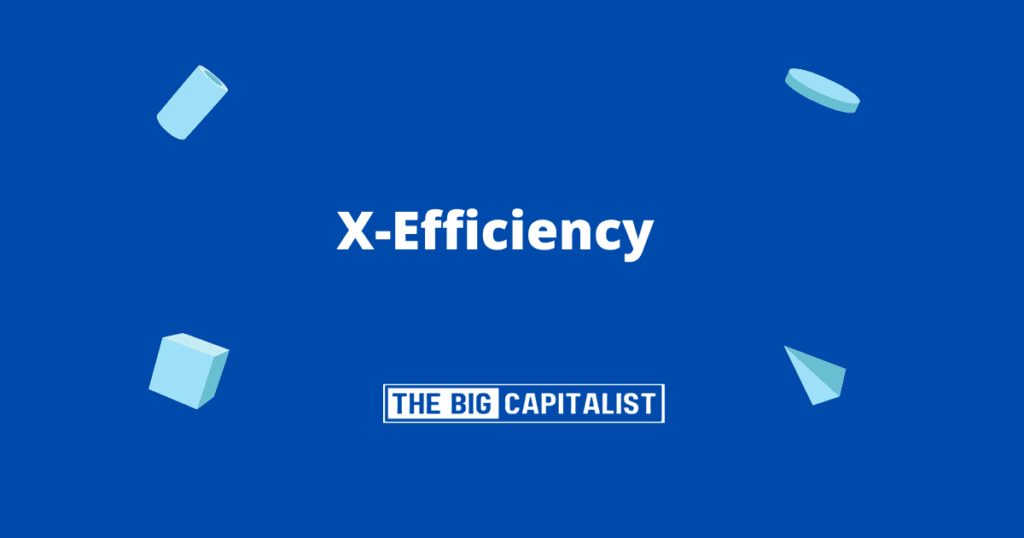X-Efficiency refers to how effectively a company uses its resources (like time, money, and labor) to produce goods or services. It measures whether businesses are getting the most output from their inputs. When a business is X-Efficient, it avoids waste and strives for maximum productivity.
Why Does X-Efficiency Matter?
- Better Performance: A company that is X-Efficient uses its resources well. This can lead to higher quality products, faster production, and better customer service.
- Lower Costs: By minimizing waste and optimizing processes, businesses can reduce their expenses.
- Competitive Advantage: X-Efficient companies often lead in the market. They can offer better prices and improve customer experiences.
- More Innovation: Continuous improvement and efficient practices often drive creativity and new ideas.
Factors Affecting X-Efficiency
- Management Quality
- Good leadership and clear goals help employees stay focused and perform better.
- Employee Motivation
- When workers are motivated, they strive to be more productive and avoid wastage.
- Market Competition
- Businesses in highly competitive markets usually aim to improve efficiency to gain an edge.
- Technology
- Using modern tools and automation can speed up production, reduce errors, and cut costs.
Simple Examples of X-Efficiency
- Fast Food Restaurant
- An efficient kitchen uses tools that make cooking faster and reduce mistakes. Examples include automated fryers and digital ordering systems.
- This helps serve more customers quickly while maintaining quality.
- Online Retailer
- A well-run ecommerce store might use data analytics to manage stock and predict demand accurately.
- This ensures products are always available and reduces overstocking or wastage.
Tips to Improve X-Efficiency
- Set Clear Goals: Define clear targets for your team.
- Invest in Training: Skilled employees work faster and make fewer mistakes.
- Use Technology: Embrace tools like automation to save time and money.
- Monitor Performance: Track results and optimize processes regularly.
- Encourage Feedback: Listen to employee and customer suggestions for improvements.
Final Thoughts
X-Efficiency is all about making the most of your resources. When businesses focus on operating efficiently, they often see better products, happier customers, and stronger profits. By understanding and improving X-Efficiency, you can keep your business competitive and thriving in a fast-paced market.
FAQs: Using Business Resources Effectively
Q1: What does it mean to use resources effectively?
It means getting the most output from your time, money, and labor while minimizing waste.
Q2: How is this different from general efficiency?
This concept, known as X-Efficiency, focuses on how well a company performs with the resources it already has, rather than relying on external changes.
Q3: Why does it matter?
Working efficiently can lead to lower costs, better quality, faster service, and stronger customer satisfaction.
Q4: Do small businesses benefit too?
Absolutely. Even small process improvements can lead to better performance and increased profits.
Q5: What role do employees play?
Motivated, well-trained employees are more productive and help avoid unnecessary waste or delays.
Q6: How can technology help?
Tools like automation and data analysis can streamline work, reduce mistakes, and improve decision-making.
Q7: Is this a one-time improvement?
No—maintaining efficiency requires regular evaluation and a mindset of continuous improvement.
















